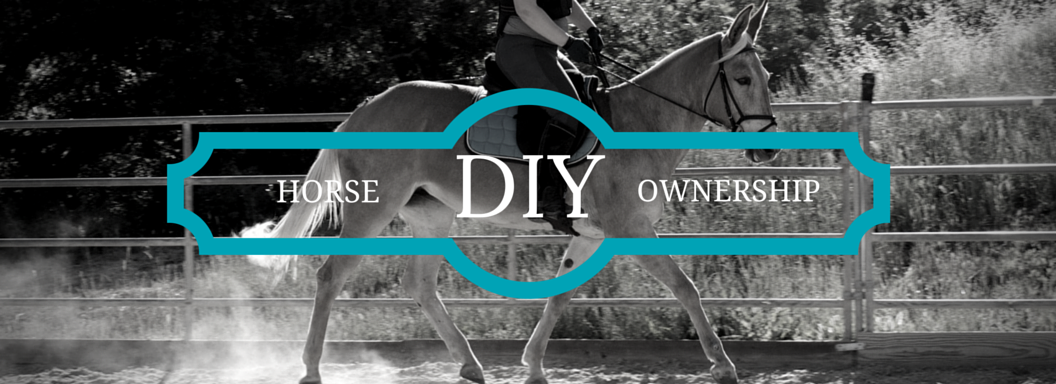My name is Olivia and I live and work in Silicon Valley. I currently have two horses and a mule. I ride mostly English, but like to do a lot of trail riding in addition to arena work.
I think I was obsessed with horses my entire life. Long before my parents could afford regular lessons, my dad would take me to a local hack and rent a pony for a pony ride. They only gave you a lead rope and it was supposed to just be a walk, but my dad would take me into the woods, tie the rope around like reins and let me run around. Once I was old enough to be allowed to ride, we’d go on trail rides together at the local rental place and also at an uncle’s barn.
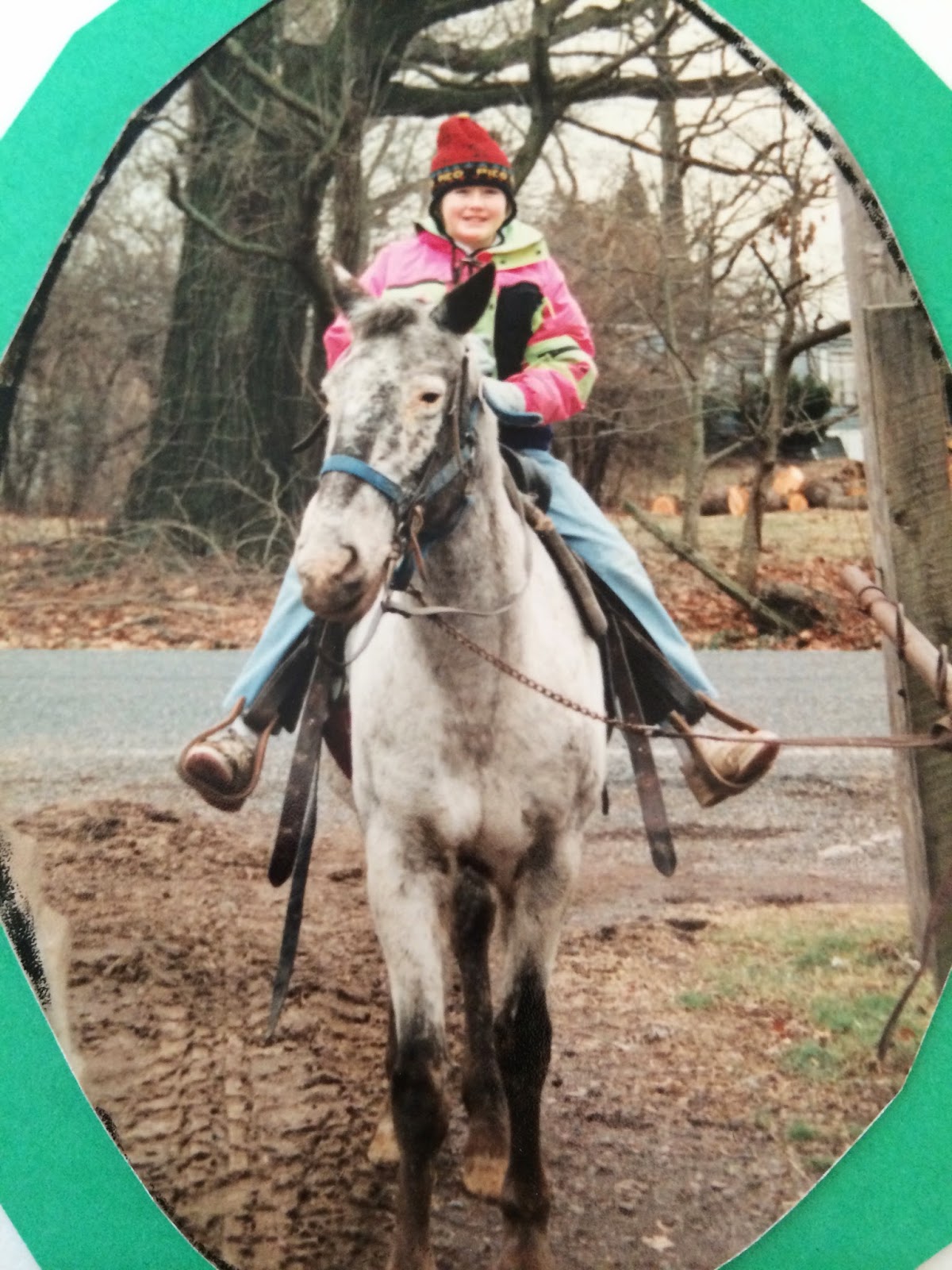
Amazing outfit? Lack of helmet? Awesome form? Check, check, check!
It took until 3rd grade for my parents to finally sign me up for weekly lessons. I started riding at Hickory Run Farm – a hunter/jumper show barn with a great lesson program. I rode here through high school starting as a kid with a bunch of close friends who slowly grew up and out grew horses until it was just me.
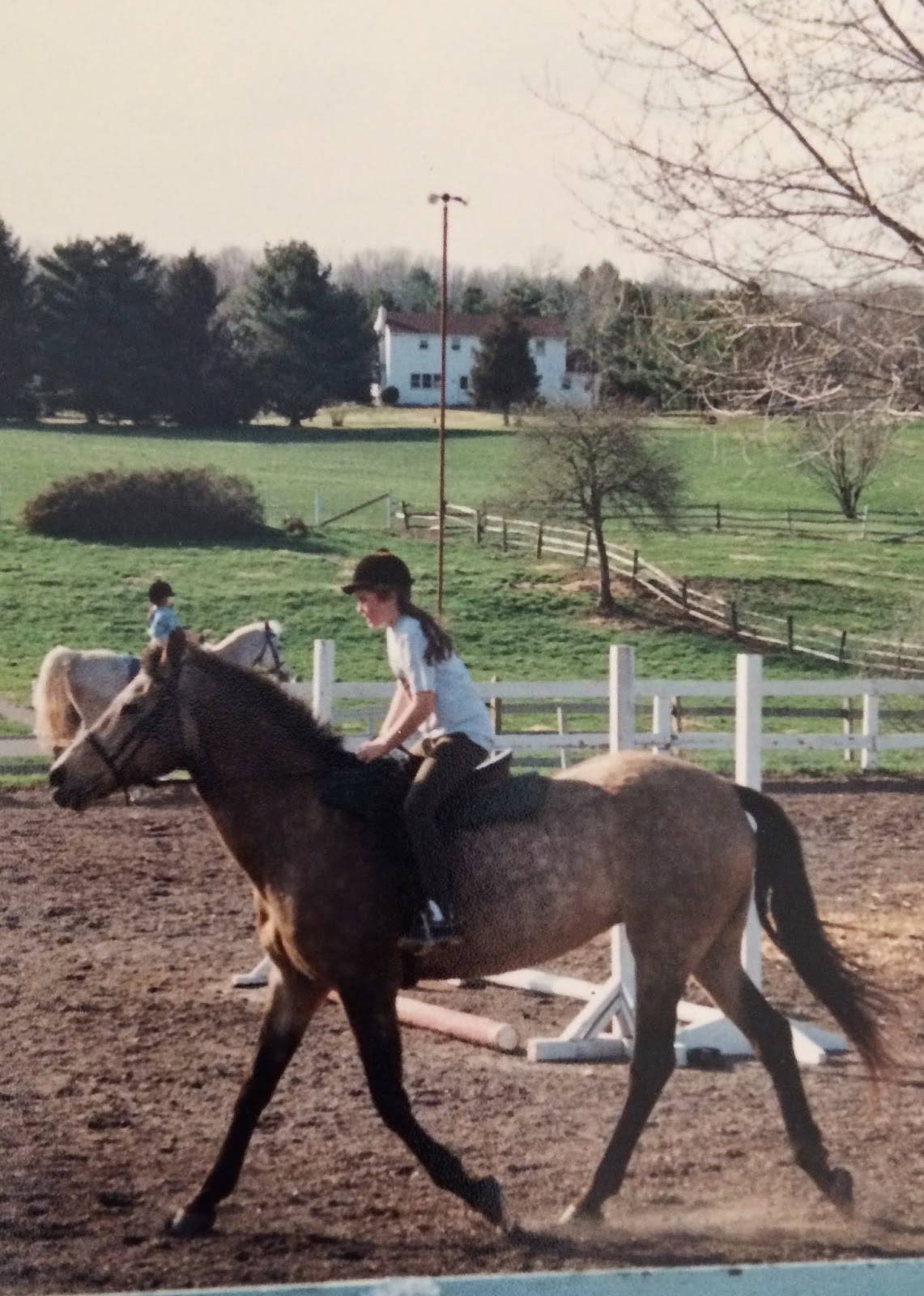
I think I’ve been riding in lessons for like a month here so the form still sucks, but look: a helmet!
Being poor and being fearless, I did what would probably be called a working student position. I rode a lot of horses from fresh ottbs and very pricey warmbloods. By the time I left for college, I could take a horse from green to jumping 4′ before they were sold or went back to their owners.
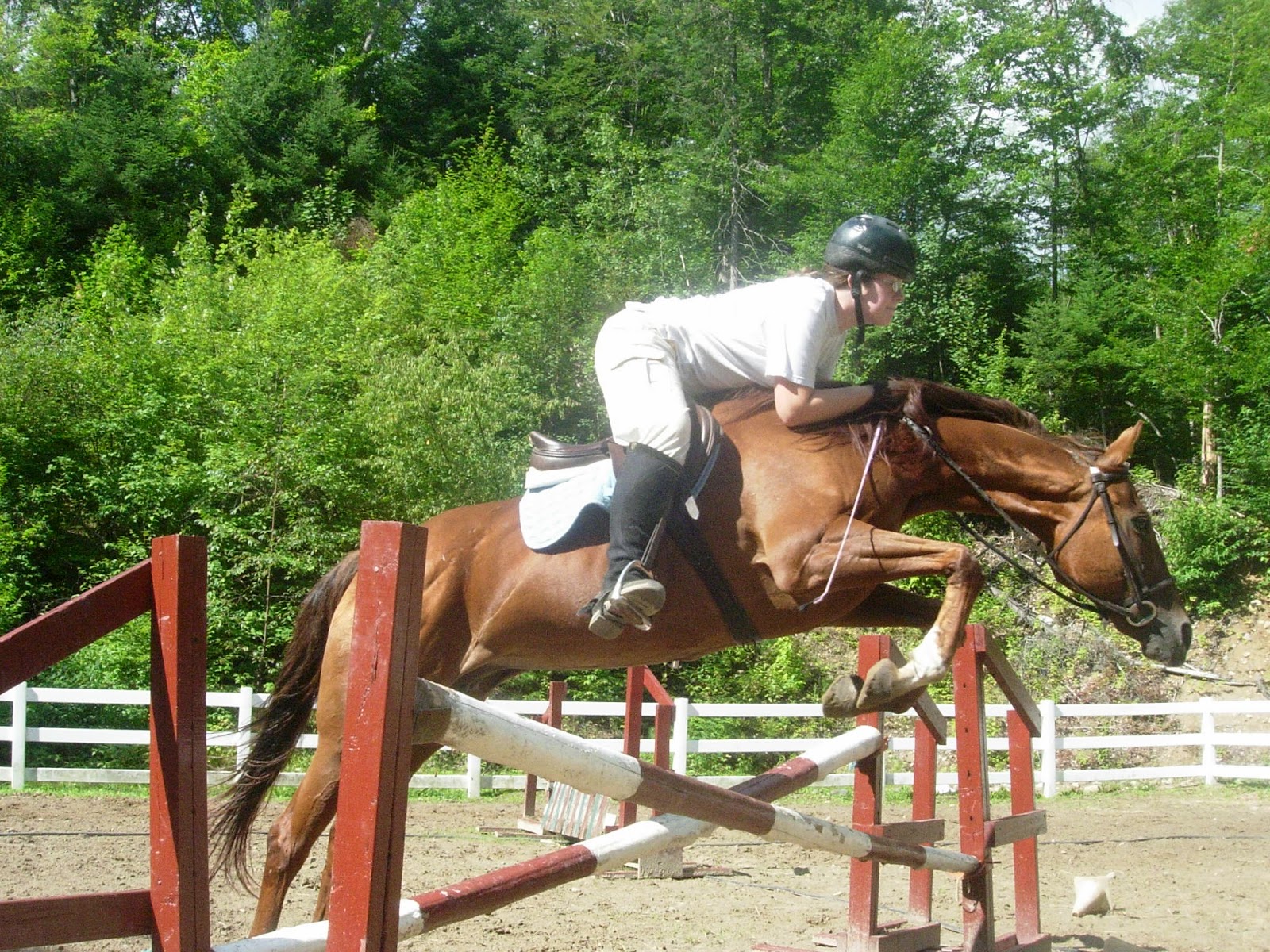
I can find no photos of me riding in high school so this is from college
In college I discovered the horror of IHSA. Having been doing jumpers at 4′, I was bored to tears doing “hunters” at 2′. I have a very clear memory of my first lesson where I was asked to shorten my reins while trotting. I sat back, used leg and rein and pushed the horse up into a lovely uphill trot on the bit and was immediately yelled at and told that I was only supposed to shorten my reins. I soon discovered that the desired position was the horse resting his whole head’s weight onto the bit. I guess that is technically a way you can ride, but it’s not a good one so I quit the equestrian team and did polo for the next 4 years.

Rubber boots, dollar store grippy gloves, and a felt cover over my plastic helmet? Stylin’
My freshman year was the first year Vassar ever had a polo team and so there weren’t any experienced players to carry the newbies. We all got to suck together. However, it was a ton of fun. Crazy horses that literally need to be mounted while moving (you just bounce along with them and throw yourself up), have to be run into corners to get them to stop, speed, fast turns, and a lack of snootiness? Yes please!
By Sophomore year, I was treasurer and was Captain my Junior and Senior years. I even won the club sport athlete of the year award my Junior year. This is all while fundraising endlessly. Club sports got only minimal financial support and I seriously bake-saled my way through the years. We had group lessons 2 days a week and had the option to work at the club’s chukker nights and weekends to get extra rides. There were weeks that I rode 5 – 6 days a week.
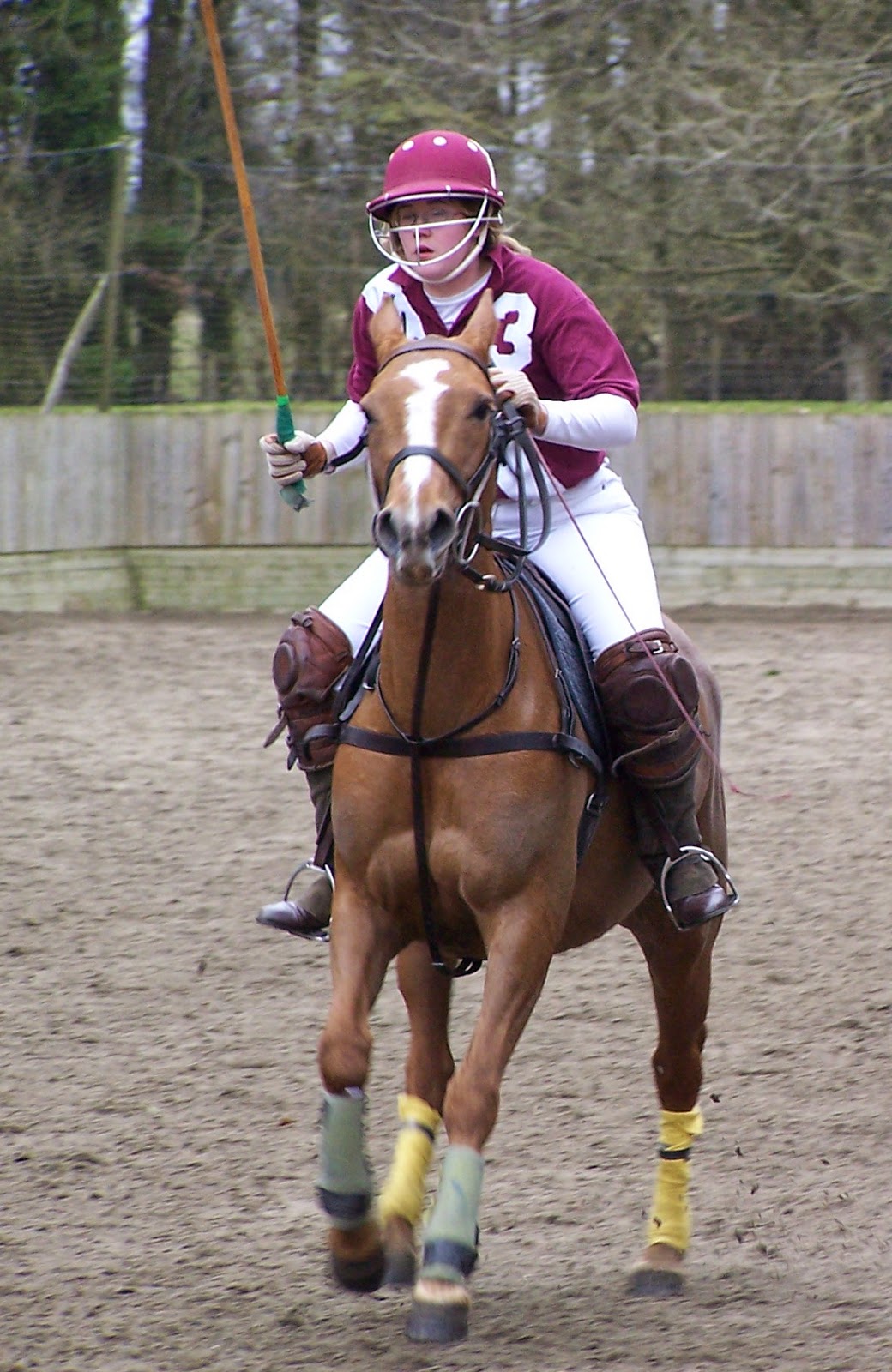
Competing in England
During my summers, I ran riding programs at summer camps. I met my dream horse during my sophomore year, and despite already being poor, getting poorer by amassing student loan debt, and you know, being a full-time college student, I bought her to save her from going to auction at the end of the year. I only had her for almost 2 years before she died from what the vet guessed was bastard strangles (I could not afford an autopsy).
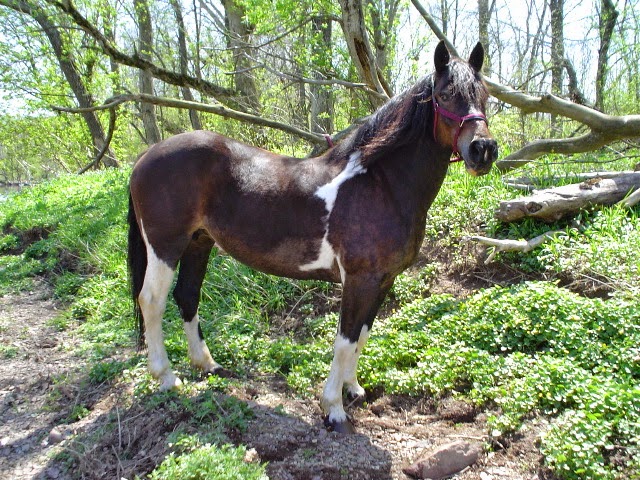
Snitch
When I left college, I had no $, so I didn’t ride much for a few years outside of running summer camps. When I met my now husband, he wanted to do a pack trip so we signed up for lessons at a county barn. He took one group lesson and became addicted. He called around for private lessons the next day and started riding 2 times a week and quickly advanced. We continued doing group lessons until we moved to California.

Vikki needed two people to tack her and she’d attack anyone who entered her stall. I requested her every time.
In California, the prices for lessons were crazy high and a lot of barns had rules about no jumping higher than 2’6″ unless you owned or leased. It was actually cheaper to buy our own horses and board them at a self care barn than it was to take 1 lesson a week, so that’s what we did. We bought Shasta in May of 2011. I adopted a horse named Gandolf, but he was quite insane. I broke my leg in a fall and ended up selling him to a guy who wanted to train him to be a circus horse. I bought Dijon in July of 2011 with the intention of keeping him only until I found a more suitable horse. I wanted something that could jump and Dijon could not.
Shortly after buying Dijon, Shasta was kicked in her stifle and this kicked of a months-long rehab process followed by a never-ending exercise regime to keep her stifle fit. About the time that Shasta healed, Dijon bowed one of his hind tendons. He was out commission for a few months, but healed pretty quickly – mostly because he spent the whole injury pretending he was fine.

“la la la, totally not injured here”
At this point, I decided to get another horse and adopted an OTTB named Dreamingofaprince. This was a terrible, terrible name, so I nicknamed her Cinder for Cinderella. I decided to keep Dijon though as Cinder was not beginner suitable and we wanted something that friends and family could ride. I leased him out enough to cover his basic board costs. Cinder went into professional training; she had been a broodmare before adoption, so she previously wasn’t trained under saddle.
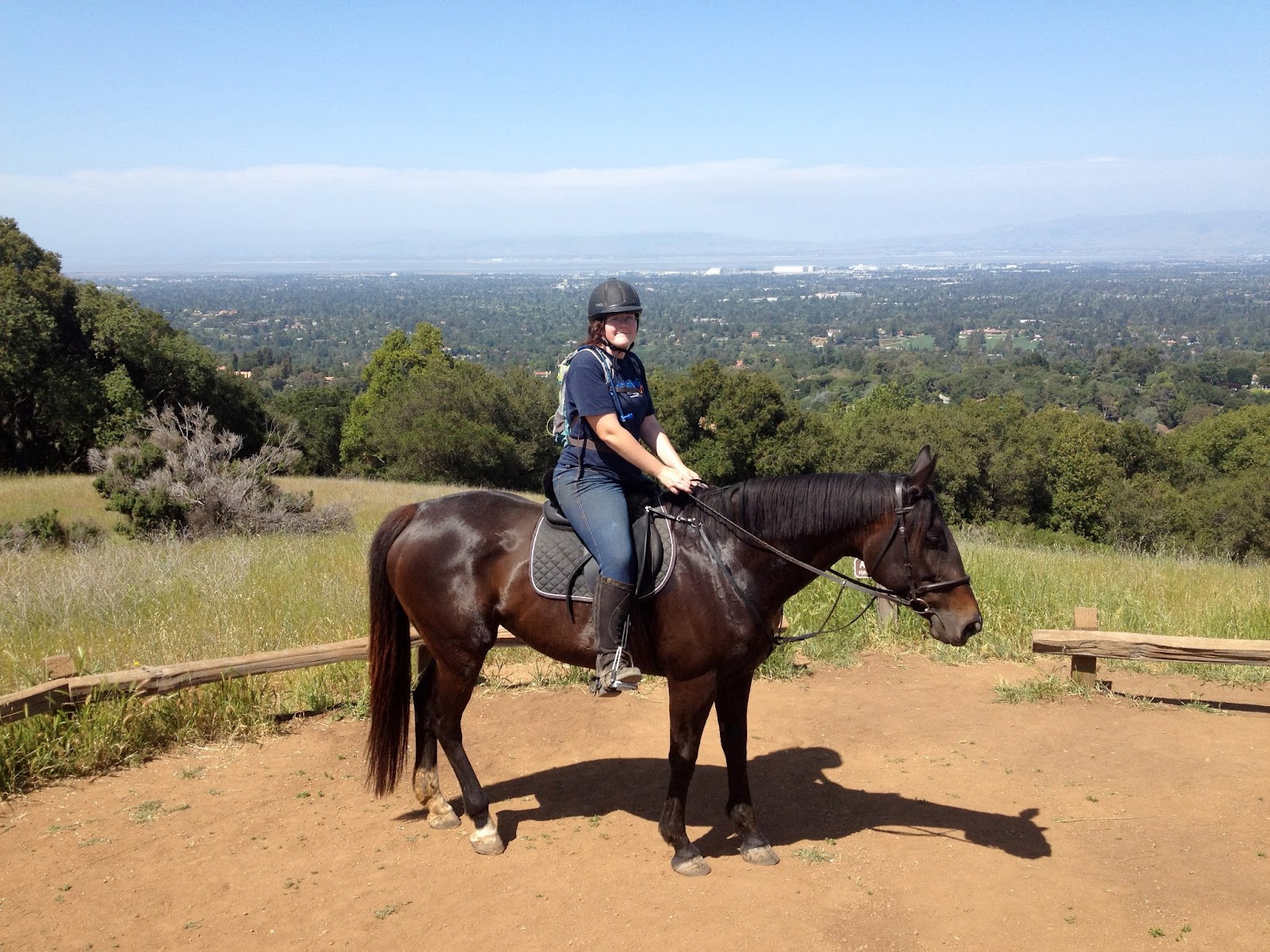
Cinder with Silicon Valley in the background
Unfortunately, Cinder was used to a life of living in a giant pasture and getting to stretch her legs and mind at will. We did not have access to pasture or a large turn-out and she was not happy in a stall with attached paddock. We sold her to a man who had a 15 acre ranchette where she could live out with two other horses when not being ridden by him.
At this point, I bought Finnick, a very large American Warmblood (Friesian Sire x Trakehner x Holsteiner Dam). Unfortunately, a few months after buying him, he dumped me in a saddle-not-fitting incident and I broke every bone in my back except for four. While this sounds extreme, it was just bone and no spine damage, so 8 weeks later I was back on a horse. (There’s a much longer story involving bed rest followed by intensive physical therapy that I won’t go in to here).
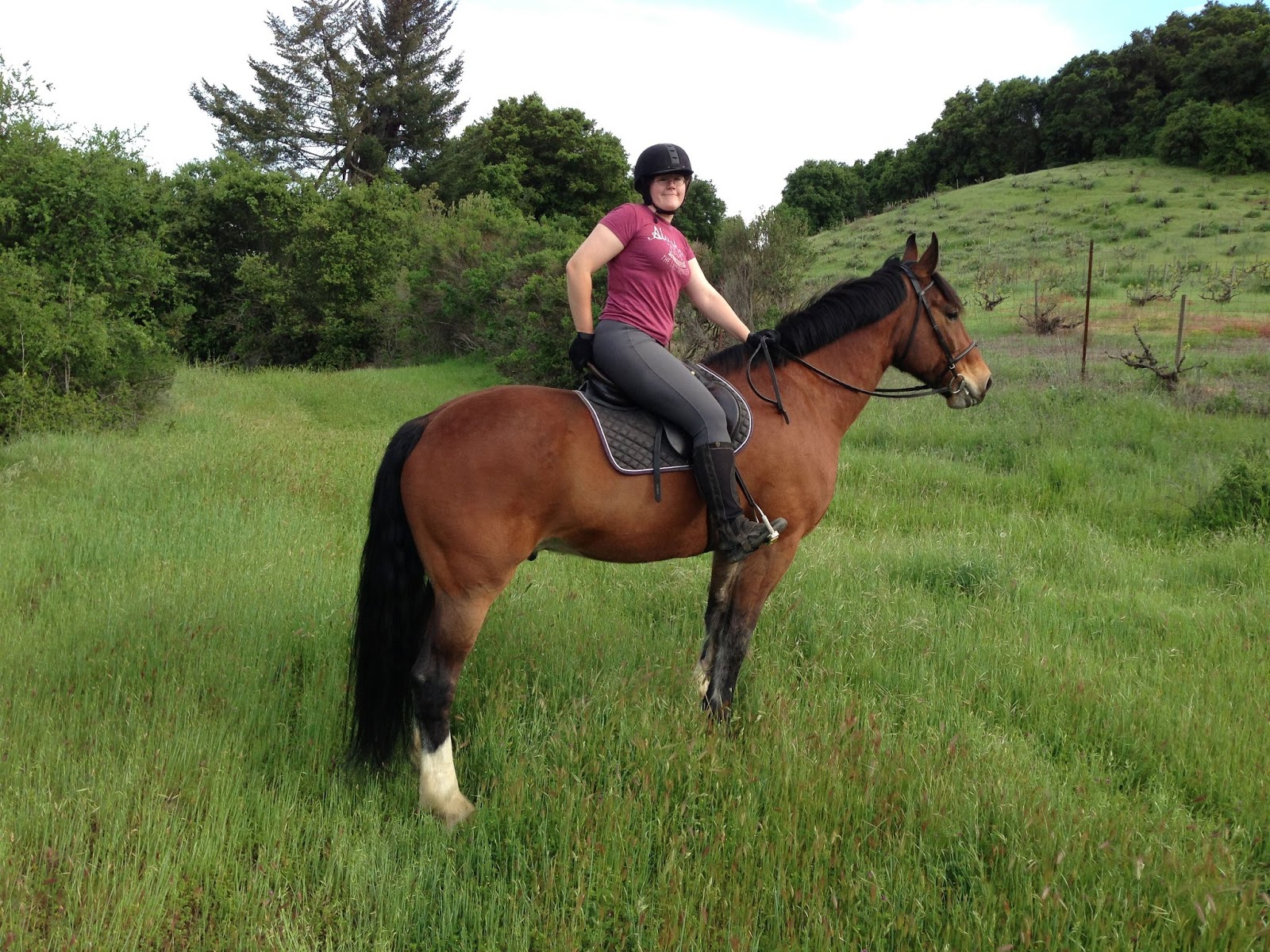
Finnick at the winery
While I was back to riding in 8 weeks, I was doing mostly walk. It would take almost a year before I was capable of much more. At the same time that I broke my back, Dijon bowed both hind tendons and entered into what seemed at the time to be a never ending rehab. We did multiple cycles of tack walking for 10-15-20… up to 60 minutes. Only to hit a set-back and start it all over again. Since we were both injured, we were pretty well suited to each other during this time.

Rehabbing
I had been wanting a mule for years and decided to stop buying and selling horses and just buckle down and find a good mule. The problem with mules is that riding mules are fairly rare to begin with. Finding mules that aren’t very stubborn or dangerous is even more difficult. A lot of the sale ads say needs experienced mule owner or something more vague, but still troubling.And finally, I had to make the entire search even more impossible by hating the color chestnut. Most mules are chestnut or seal bay. I like bays, but hate chestnuts. I also hate lazy equines. I want my horse/mule to want to go and I do not want to have to kick all the time. The reputation mules have for being lazy is true for most of the population. I was considering flying to view mules in other parts of the country when I found Nilla. You can read about her in her own tab. I decided to sell Finnick. His trot was just too big and bouncy for my back and climbing up on him was very difficult for me after the injury. One of the things I haven’t recovered is flexibility so I still have a hard time mounting even not very tall horses. Finnick hated arena work and really just wanted to be a trail horse. Unfortunately, most of the people who came to look at him wanted to do dressage. I ended up being contacted by San Francisco’s US Park Police who asked if I’d consider donating Finnick to them. They came and checked him out, liked what they saw and took him on trial. Three months later, he passed his trial and now gets to spend his days out on the trails and city streets of San Francisco.
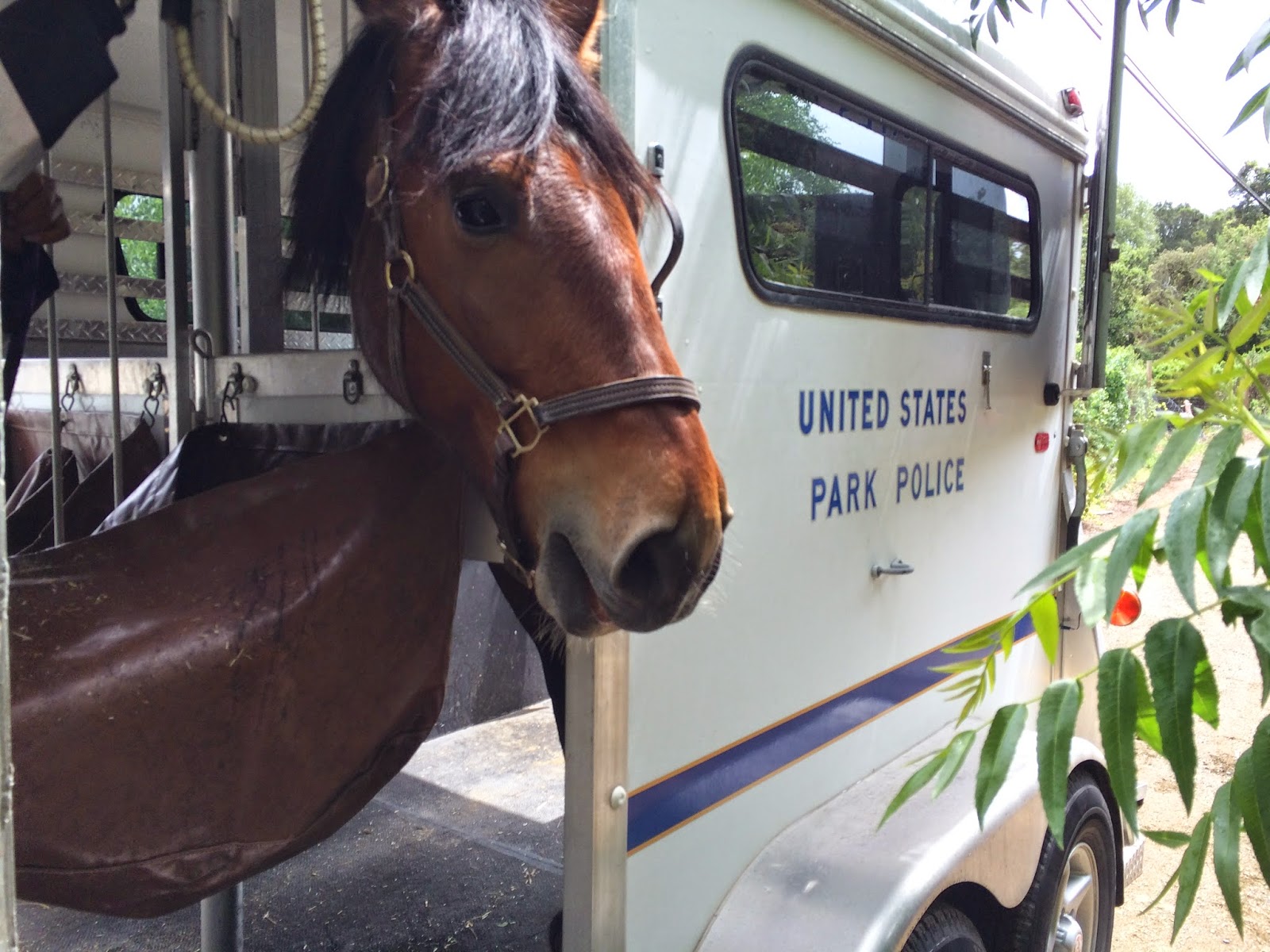
Police Horse
About 9 months after buying Nilla, I started this blog. You can follow my adventures with all of my horses here.
